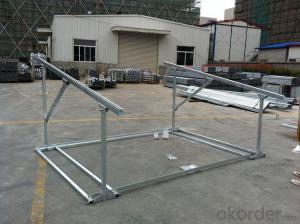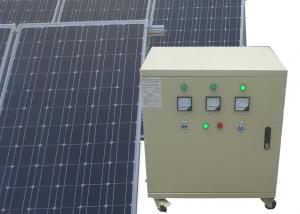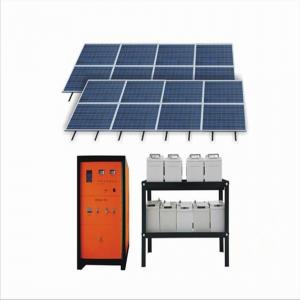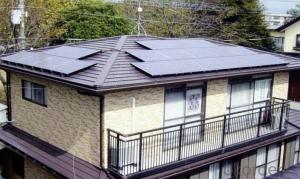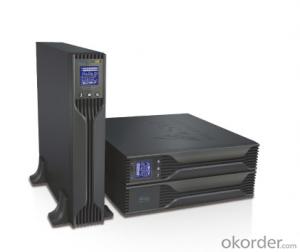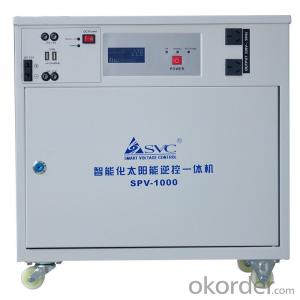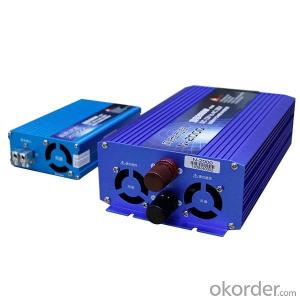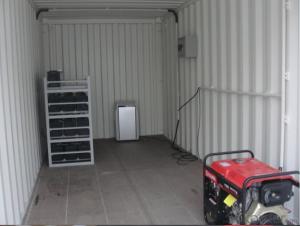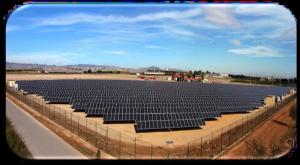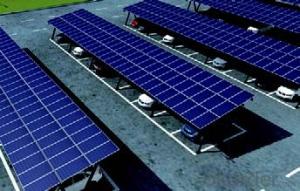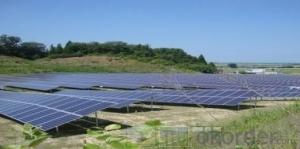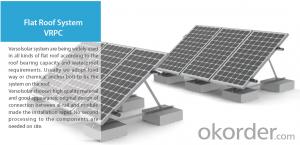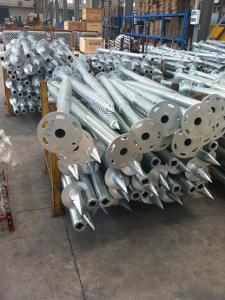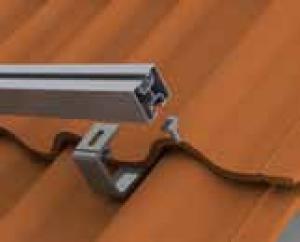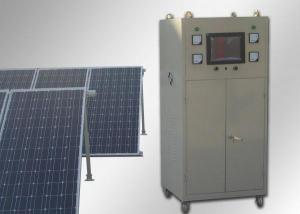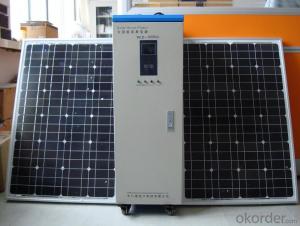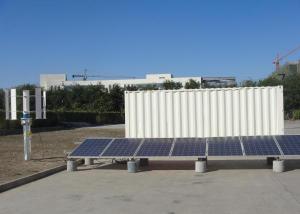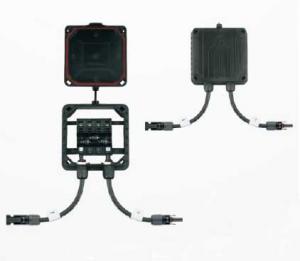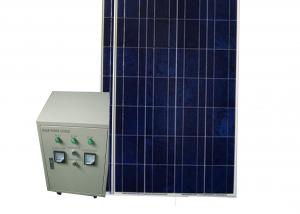Puerto Rico Solar Energy Systems Solar Mounting System Roof System
- Loading Port:
- China Main Port
- Payment Terms:
- TT OR LC
- Min Order Qty:
- -
- Supply Capability:
- -
OKorder Service Pledge
OKorder Financial Service
You Might Also Like
Packaging & Delivery
Packaging Detail:Normal package seaworthy
Delivery Detail:15 days
Specifications
Easy installation Competitive price TUV&SGS test report & CSA certification 15-warranty
Specifications
1) Super smooth beautiful appearance,outstanding quality,large supply.
2) Available in customized surface finishes.
3) Well machined,for example,cutting,drilling and milling with excellent tolerance.
4) Meet with customer’s designs and supply you best price.
5)Usages:Supply for solar panel modules.
Technical characteristics
Installation site:
ground,hillside,and grassland
Installation angle
it is based on customers’ requirements
Installation height
it is basedon customers’ requirements
Solar panel type; with or without frame
Components arrangement :horizontal or vertical
Support track
aluminum alloy extrusion
Quality warranty
15 years
Advantages
1)Quick installation: with high degree of pre-installed rate, the system could be easily installed by using galvanized carbon steel rails for PV Stent, and specially designed connection parts of the PV bracket, which could reduce installation time and cost greatly.
2)Offer unmatched durability: with all structural components comprised of high class stainless steel and anodized aluminum alloy, it is designed for 25 years service life and backed by 15 years warranty.
3)Stand up to extreme weather: The SuninTek solar mount is designed to stand up to the extreme weather complied with the AS/NZ 1170 and other international structure load standard by the skilled engineer. The main support components also have been tested to guarantee its structure and load-carrying capacity.
4)Provide broad installation flexibility: These systems accommodate most commercially available framed solar panels , and they can scale easily from small to large, multi-megawatt installations.
5)Diversified Application: The PV mounting system produced can be adopted by various types of PV cells panels which you can find in the market. It can serve for both mini solar power system and huge plant with megawatt capability.
Main features
1. Installation cost savings.
2. Save installation time.
3. Increase the mechanical strength of solar energy mounting to ensure that wind requirements.
4. The outdoor for installation of solar energy.
5. Length can be customized according to customers.
6. Service life of up to 25 years.
7. Products through the international certification.
8. Stent material composition of the galvanized steel and aluminum.
9. 15 years system and structural guarantee.
10.Flexible post spacing withstands different wind & snow loads.
11. High quality material in Aluminium 6005-T5 and SUS 304.
12.Screws and nuts go with every components needed.
13.Mechanical calculation and reliability tested to ensure highest product quality.
- Q: Are there any noise concerns associated with solar energy systems?
- Yes, there are minimal noise concerns associated with solar energy systems. Unlike traditional energy sources such as generators or wind turbines, solar panels do not produce any noise while generating electricity. This makes solar energy systems a quiet and peaceful option for harnessing renewable energy.
- Q: How do solar energy systems affect air conditioning costs?
- Solar energy systems can significantly reduce air conditioning costs as they generate electricity from the sun, offsetting the need for traditional energy sources. By harnessing solar power, homeowners can power their air conditioning units without relying heavily on the grid, resulting in lower energy bills and decreased dependence on fossil fuels.
- Q: Can solar energy systems be used for powering greenhouses?
- Yes, solar energy systems can be used for powering greenhouses. Solar panels can generate electricity that can be used to power lighting, ventilation, heating, and cooling systems in greenhouses. This allows for a sustainable and renewable source of energy, reducing reliance on fossil fuels and minimizing greenhouse gas emissions. Additionally, solar energy systems can be integrated with energy storage solutions to ensure continuous power supply even during periods of low sunlight.
- Q: Can solar energy systems be integrated with battery storage?
- Yes, solar energy systems can be integrated with battery storage. Battery storage allows excess energy generated from solar panels to be stored and used during times when the sun is not shining, such as at night or during cloudy days. This integration helps provide a continuous and reliable source of electricity, reducing reliance on the grid and maximizing the benefits of solar energy.
- Q: Can solar energy systems be financed or leased?
- Certainly, it is possible to finance or lease solar energy systems. Various companies provide financing choices for individuals and enterprises interested in installing solar panels and similar energy systems. These financing alternatives enable customers to divide the system's cost over a specific duration, thus rendering it more economically feasible. Furthermore, leasing arrangements are attainable whereby a third-party company owns and maintains the solar panels, and the customer pays a monthly fee to lease the system. Consequently, such financing and leasing alternatives have enhanced the accessibility of solar energy to a broader spectrum of individuals, significantly contributing to the rapid expansion of the solar industry in recent years.
- Q: Can solar energy systems be installed on recreational vehicles?
- Yes, solar energy systems can be installed on recreational vehicles. These systems are commonly used to power various appliances and devices in RVs, providing a sustainable and renewable source of energy while on the road.
- Q: Can solar energy systems be used for heating water in commercial buildings?
- Yes, solar energy systems can be used for heating water in commercial buildings. Solar water heating systems utilize the sun's energy to heat water, which can then be used for various purposes like showers, dishwashing, and laundry in commercial settings. These systems are cost-effective, environmentally friendly, and can significantly reduce energy consumption.
- Q: What is the role of charge controllers in a solar energy system?
- The role of charge controllers in a solar energy system is to regulate the flow of electrical charge between the solar panels and the batteries. They ensure that the batteries receive the optimal amount of charge and prevent overcharging, which can damage the batteries. Charge controllers also protect the batteries from over-discharging, which can reduce their lifespan. Overall, charge controllers help optimize the efficiency and longevity of the solar energy system.
- Q: Can a solar energy system be installed on a building with a flat roof?
- Certainly, it is possible to install a solar energy system on a building that has a flat roof. Actually, when it comes to solar panel installations, flat roofs are often preferred due to their accessibility and ideal exposure to sunlight. By utilizing a weight-based system called ballast, solar panels can be directly mounted on the flat surface of the roof without the need for any roof penetrations. Moreover, flat roofs offer abundant space to arrange the solar panels in an optimal way, thereby maximizing energy production. Consequently, flat roofs serve as an outstanding choice for the installation of solar energy systems and can make a significant contribution to the generation of clean and sustainable electricity.
- Q: Can solar energy systems be used in areas with limited access to distribution networks?
- Yes, solar energy systems can be used in areas with limited access to distribution networks. This is because solar energy systems can operate independently, generating electricity from sunlight and storing it in batteries for use when needed. This makes them a viable and sustainable solution for areas without reliable access to power grids or distribution networks.
Send your message to us
Puerto Rico Solar Energy Systems Solar Mounting System Roof System
- Loading Port:
- China Main Port
- Payment Terms:
- TT OR LC
- Min Order Qty:
- -
- Supply Capability:
- -
OKorder Service Pledge
OKorder Financial Service
Similar products
Hot products
Hot Searches
Related keywords
